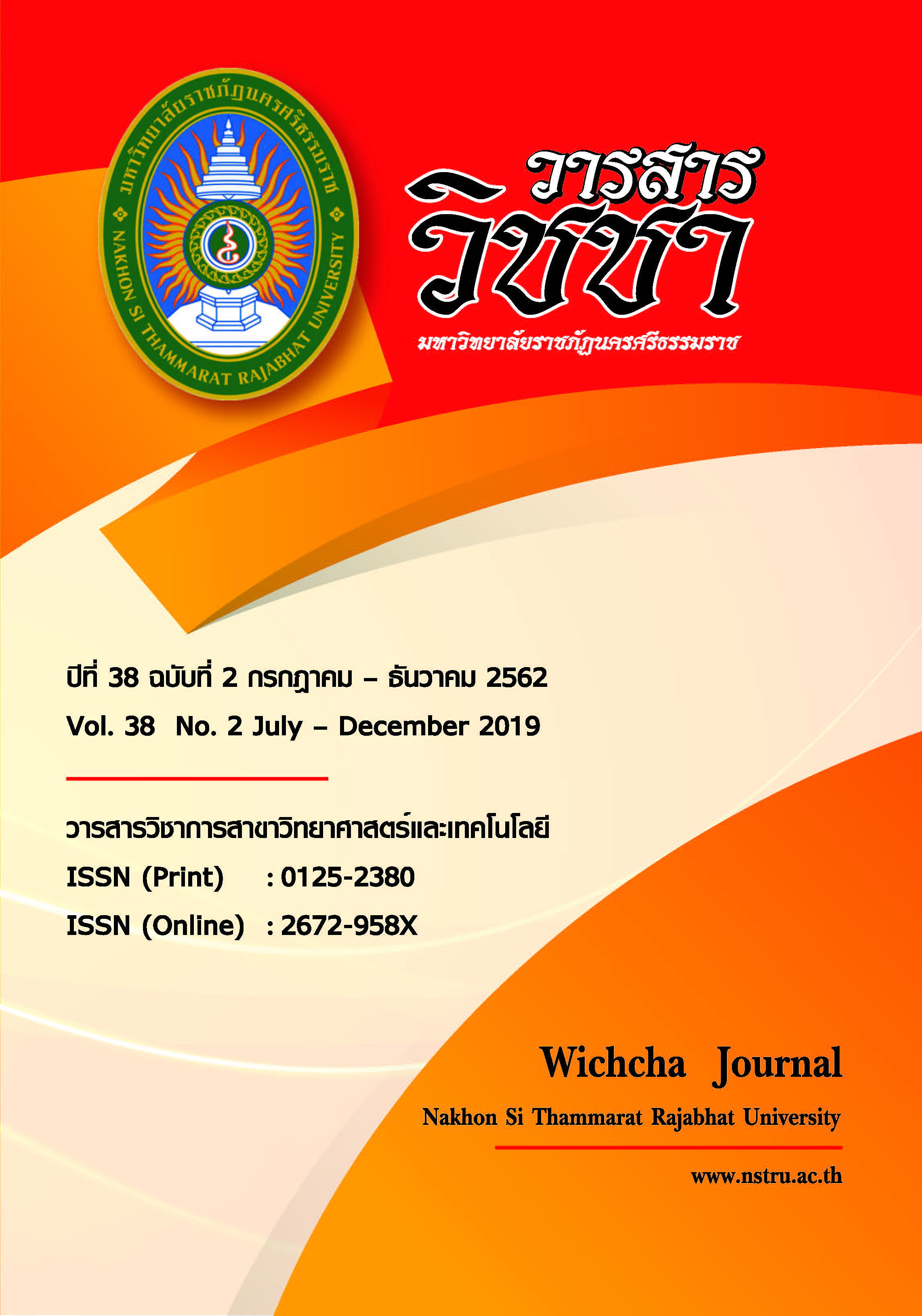Effect of Lesson Plan Design and Development of Information Technology Media to Learning Outcomes ผลของการออกแบบแผนการสอนและการพัฒนาสื่อเทคโนโลยีสารสนเทศ ต่อผลลัพธ์การเรียนรู้
Main Article Content
Abstract
The research was aimed to study the lesson plan design and develop information technology media which is suit to the teaching activities. The media was used in teaching and learning, and evaluated its the effectiveness. The research employed mixed method research methodology: research and development and qualitative research. The subjects were 88 students selected by purposive sampling from a population of 310. Research data were obtained from behavior observations, skill development and learning ability tests, group work and presentation, and in-dept interviews. The research results showed that the designed lesson plans and information technology media had positive effects on the learners’ learning outcomes which were higher in all five domains: ethical and moral development domain, knowledge domain, cognitive skills domain, interpersonal skills and responsibility domain, numerical analysis, communication and information technology skills domain.
However, assessment and evaluation aspect was slightly higher. Besides, they stimulated the learners and made the learners alert, and the use of information technology media helped controlling time in activity organizing so the time was managed effectively. In reflection of the lesson plan design, it was revealed that the teachers should choose the appropriate teaching process that fit with the lesson in each week. And in developing the information technology, it was found that there was time limitation which required the fast and skillfulness of the teachers to produce the teaching media, and there was a technical problems in using the media, wasting time in improving the content on the websites with high frequency, spending a lot of time in producing teaching media and preparing for class to organize the learning activities in each week.
Article Details
เนื้อหาและข้อมูลในบทความที่ลงตีพิมพ์ในวารสารวิชชา มหาวิทยาลัยราชภัฏนครศรีธรรมราช ถือเป็นข้อคิดเห็นและความรับผิดชอบของผู้เขียนบทความโดยตรง ซึ่งกองบรรณาธิการวารสารไม่จำเป็นต้องเห็นด้วยหรือร่วมรับผิดชอบใด ๆ
บทความ ข้อมูล เนื้อหา รูปภาพ ฯลฯ ที่ได้รับการตีพิมพ์ในวารสารวิชชา มหาวิทยาลัยราชภัฏนครศรีธรรมราช ถือเป็นลิขสิทธ์ของวารสารวิชชา มหาวิทยาลัยราชภัฏนครศรีธรรมราช หากบุคคลหรือหน่วยงานใดต้องการนำข้อมูลทั้งหมดหรือส่วนหนึ่งส่วนใดไปเผยแพร่ต่อหรือเพื่อการกระทำการใด ๆ จะต้องได้รับอนุญาตเป็นลายลักษณ์อักษรจากวารสารวิชชา มหาวิทยาลัยราชภัฏนครศรีธรรมราชก่อนเท่านั้น
The content and information in the article published in Wichcha journal Nakhon Si Thammarat Rajabhat University, It is the opinion and responsibility of the author of the article. The editorial journals do not need to agree. Or share any responsibility.
References
Daouk, Z., Bahous, R. and Bacha, N.N. (2016). Perceptions on the effectiveness of active learning strategies. Journal of Applied Research in Higher Education, 8(3), 360-375.
Futureclassroom. (2013). CBLTool: Make your device alive. Retrieved 8 June 2018, from: https://cbltool.com.
Ize, P. (2014). Active learning. Retrieved 8 June 2018, From: https://parnward8infowordpress.com
Social Sciences Department Chiang Rai Rajabhat University. (2016). Active learning. Retrieved 1 June 2018, From: https://social.crru.ac.th/activeLearning.
Nookhong, J. and Kaewrattanapat, N. (2017). The automatic consulting system in higher education institution. International Journal of Information and Education Technology, 7(10), 712-715.
Lento, C. (2016). Promoting active learning in introductory financial accounting through the flipped classroom design, Journal of Applied Research in Higher Education, 8(1), 72-87.
Hemmun, N. and Sirirattanajit, A. (2015). Student-centered learning in higher education that related to TQF. Retrieved 1 June 2018, From: www.manager. co.th/Daily/ViewNews. aspx?NewsID=9580000022950.
Pates, D. and Sumner, N. (2016). E-learning spaces and the digital university, The International Journal of Information and Learning Technology, 33(3), 159-171.
Thaiall. (2013). What is moodle. Retrieved 8 June 2018, From: www.thaiall.com/e-learning/moodle.htm.
Wikipedia. (2016). Thai education. Retrieved 8 June 2017, From: https://th.wikipedia.org/wiki/.
Wikipedia. (2018). Kahoot. Retrieved 8 June 2018, From: https://th.wikipedia.org/wiki/kahoot.
Luechaipanich, W. and Jandee, K. (2016). 21st century teaching guide. Retrieved
1 June 2018, From: https://blog.eduzones.com/wiriyah/149091.
Williams-Pierce, C. and Swartz, T.F. (2016). Learning by design: teacher pioneers. On the Horizon, 24(3), 268-279.


